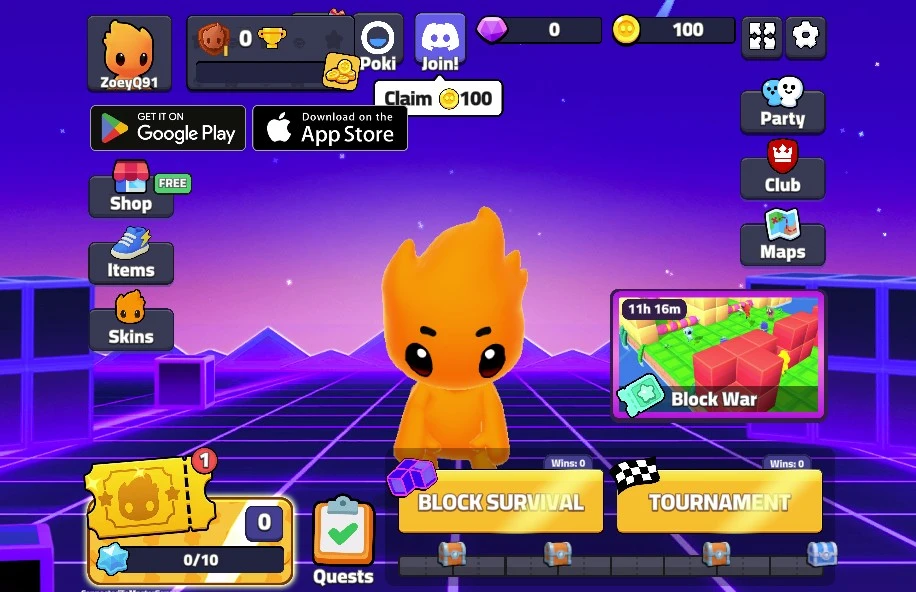
Action

Drift Boss Arena
More games to drift through
Swap tabs in seconds and keep the momentum going with another arcade favorite.

Action

Sports

Simulation

Racing

Simulation

Puzzle

Action

Arcade

Simulation

Simulation

Puzzle

Simulation

Simulation

Simulation

Puzzle
Puzzle
Master brutal platform stages, outsmart hidden traps, and sharpen reflexes in Level Devil. Sprint, jump, and react fast to conquer devilish levels and prove your skill.
Level Devil looks like a clean, classic platform run—but the floor, the walls, and even the UI may betray you at the worst moment. Your objective is simple: guide your character to the exit. The reality is harsher: spikes sprout from safe tiles, platforms collapse a split second late, and doors that seem welcoming slam shut when you leap. Success in Level Devil comes from learning to expect the unexpected, reading tiny tells, and refining your timing until your reactions are automatic.
Each stage escalates the tension. Early levels teach fundamentals—short hops, precise landings, and measured patience. Later sets raise the stakes with moving hazards, disappearing blocks, and bait patterns that punish autopilot. The result is a sharp, learnable loop: observe, test, fail fast, adjust, and execute. When you finally thread a perfect sequence, Level Devil lands that rare mix of frustration turned into triumph.
Approach every room like a puzzle that fights back. First, scout: move a few pixels, tap jump, and watch for micro-animations—crumbles, hairline cracks, or a spike that twitches before springing. Second, commit: once you spot a viable route, push through decisively. Third, adapt: if the environment mutates mid-run—and in Level Devil it often does—pivot your plan in-motion. This dance between planning and improvisation is the signature heartbeat of the game.
Controls are intentionally straightforward so the stage can be the real antagonist. Move with the arrows or WASD and jump with Space. What matters is cadence. Tiny tap jumps clear low hazards. Held jumps buy extra hangtime over shifting platforms. Short stutter steps set up consistent spacing before tricky gaps. Buffering inputs helps when a tile fades a frame earlier than expected. In Level Devil, mechanical clarity lets you focus fully on reading the room.
Some traps key off your behavior. A ceiling spike might drop only if you hesitate beneath it. A floor tile may stay solid if you breeze past but crumble if you double back. The game nudges you to vary your rhythm, which keeps even solved rooms lively. Level Devil pushes you to think of levels not as static layouts but as systems responding to your choices.
Break rooms into checkpoints in your head. Step one: identify non-negotiables like a single safe tile between two death pits. Step two: map timers—moving platforms, retracting spikes, and door cycles. Step three: define a line, the cleanest sequence of jumps with the least waiting. Practicing that line a few times turns messy reaction into a memorized flow. When the level introduces a twist, update your line and try again. This is where Level Devil shines: it rewards study without ever feeling rote.
Almost every unfair moment has a fair hint: a pixel of dust before the floor collapses, a barely audible tick before a launcher fires, a tile whose color is one tone off from the rest. Train yourself to notice these cues. Play with sound on; latency is low and audio helps you preempt ambushes. As you internalize these signals, Level Devil transforms from chaos into choreography.
1) Test edges, not centers. Probe the boundaries of platforms with micro-steps to reveal triggers. Level Devil loves to hide danger in the middle path.
2) Count beats out loud. Many moving cycles are on simple counts—two beats out, one beat back. Matching your jump to that rhythm is stronger than relying on feel.
3) Reset mental tilt. A fast death streak erodes judgment. Take ten seconds, breathe, then go again. Durability wins long runs in Level Devil.
4) Look one obstacle ahead. Treat each jump as setup for the next. Overcommitting to a single hazard often dumps you into the following trap.
5) Commit when the window opens. Hesitation gets punished. The safest moments in Level Devil are often right after a hazard fires.
Not all jumps are created equal. You’ll chain short hops across rumor-thin tiles, then demand a fully charged leap that clears a late-spawning spike wall. Practice feathering the jump key to nail heights within a few pixels. When two hazards desync, insert a buffer tap midair to realign timing. The more precisely you modulate jump height, the easier Level Devil becomes.
Occasionally, a sign points “SAFE” toward a pit, or the checkpoint sits suspiciously close to a launcher. Treat everything as suspect. The prank energy fuels laughs after the sting. Crucially, the design remains learnable. Once you’ve seen the trick, your next attempt feels fair. That is the contract Level Devil keeps: it may surprise you, but it rarely wastes your time.
Some stages sprinkle temporary boosts—extra jump height, a momentary shield, or a speed burst—along risky lines. They tempt you into spicier routes that cut seconds off your clear. Leaderboards incentivize cleaner execution: tighter arcs, fewer stutter steps, and proactive trap baits. The top times in Level Devil aren’t lucky; they’re rehearsed performances.
Movement: Arrow keys or WASD.
Jump: Spacebar.
Precision: Tap for feather-light hops and hold for full hangtime.
Reset: Press R or click the retry icon for instant restarts.
Level Devil's mean streak hides a generous feedback loop. Every death teaches something concrete, and every clean run feels like a tiny speedrun. Keep notes, laugh at the betrayals, and you'll crave just one more room.
Need more drift intel? Read the Drift Boss Help Center or contact our crew through the support page.